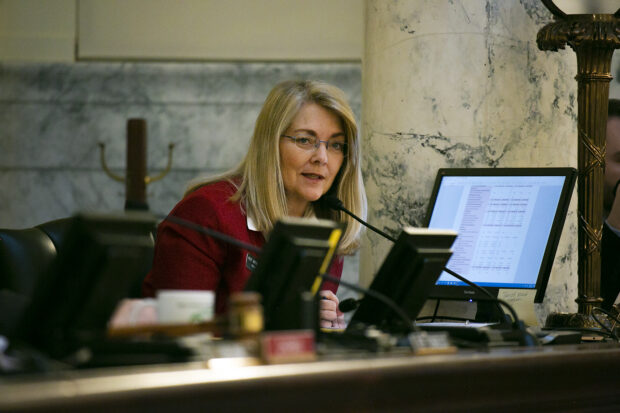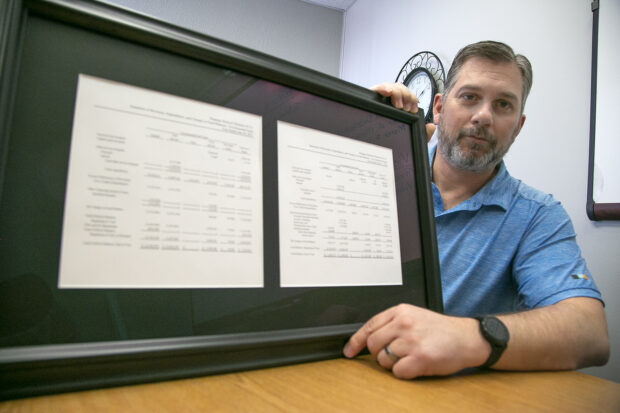You received $600.
Idaho’s education system will share more than a quarter billion dollars.
The new federal coronavirus relief law is bringing another surge of federal money into the state. K-12 and higher education could receive more money from the new law than they did from the Coronavirus Aid, Relief and Economic Security Act passed in March.
The new money could provide extra help for K-12 students who are losing ground during the pandemic. It will also put some money into the hands of Idaho college students. But it’s the schools’ big one-shot check from Uncle Sam. Once it’s gone, the schools — and the Legislature — will have to pick up the slack.
First, let’s run through the numbers from the new law, the Coronavirus Response and Relief Supplemental Appropriations Act:
- School districts and charters will receive $176.3 million in direct aid. The CARES Act provided $43 million in similar direct aid. (The $43 million isn’t all the CARES Act money the schools received, however; the biggest chunk was $99 million Gov. Brad Little freed up to offset state funding cuts.)
- Idaho’s public colleges and universities will receive $72.7 million, including $18.1 million that will go straight to students. They received $36.2 million from the CARES Act, with half of the money going to direct student aid.
Like the CARES Act that came before it, the supplemental relief bill is designed to cover coronavirus-related costs. If the CARES Act is any indication, districts might be slow to spend the new round of money.
The Boise School District did move quickly, using CARES Act money to launch its Boise Online School for parents who opted to keep kids home this year; the school has a staff of 250 and an enrollment of 3,670. The Nampa School District put some CARES Act money into online instruction, daycare options for staff and PPE for buildings, but set aside much of the money to cover expected decreases in state funding.
But Idaho’s largest school district, West Ada, hasn’t spent any of its $3.1 million of direct aid from the CARES Act. District officials are looking at their options for the $14 million on its way under the new law, and they’re trying to make sure they spend their money in accordance with federal guidelines, district chief financial officer Jonathan Gillen said this week. (Again, the direct aid isn’t all the money West Ada received from the CARES Act. Click here for a detailed look at how districts spent their CARES Act money, and how West Ada put some money into staff bonuses, computing devices, and other programs.)
West Ada is hardly the only district sitting on its share of the $43 million in direct aid. As of Jan. 25, districts and charters have drawn down only $8.7 million from that account, State Department of Education federal programs director Karen Seay told the House Education Committee Tuesday.

“It does beg the question of ‘why,’” said Rep. Wendy Horman, R-Idaho Falls, a member of the budget-writing Joint Finance-Appropriations Committee.
It might be largely a moot point, but for now, the new $176.3 million for K-12 is in legislative limbo. Lawmakers still have to authorize spending some $900 million of federal coronavirus aid, and that includes the $176.3 million for K-12. But 17 districts and charters have completely spent their CARES Act money, said Seay, so they could start spending their share of the new money as soon as the Legislature gives them the green light.
Districts and charters have time. They have until Sept. 30, 2022 to spend CARES Act money, and they have until Sept. 30, 2023 to spend the money from the new stimulus law.
For higher education, though, the timetable is tighter. Colleges and universities have a year to spend their institutional aid they’re getting from the new law, and they’re already weighing their options.
Boise State University could use its $15.1 million to offset state budget cuts, pay for IT infrastructure, coronavirus testing and vaccine programs or salaries for campus contact tracers. The College of Western Idaho’s $8.7 million could go toward classroom technology and student aid. The University of Idaho’s $8.3 million could go toward continued coronavirus testing, PPE, classroom technology or faculty training.
For K-12 and higher education alike, the new influx of money comes with more relaxed guidelines.
Colleges and universities can use their supplemental money to cover pandemic-related revenue losses — such as refunds on canceled room and board contracts. They couldn’t use CARES Act money to replace lost revenues.
School districts and charters, meanwhile, appear to have almost unlimited spending latitude. The supplemental law spells out 15 possible uses of the money, including “other activities that are necessary to maintain the operation of and continuity of services … and continuing to employ existing staff.”
Said Horman: “There’s a lot of discretion in that.”
The influx of new and relatively unencumbered federal money might represent a grand bargain of sorts, particularly for K-12. The money comes in as Gov. Brad Little is recommending a 3.7 percent spending increase for K-12, and state superintendent Sherri Ybarra requested 2.5 percent — smaller numbers than lawmakers have approved in recent years.
Quinn Perry, the Idaho School Boards Association’s policy and government affairs director, says the no-frills K-12 budget request makes sense under the circumstances, but she quickly added a caveat about the federal stimulus.
“I think what’s important to remember is that’s one-time money.”

Nampa district finance director Randy Dewey is well aware of that. He says the added $12.1 million in federal stimulus money will definitely make a difference for students, by keeping teachers on the job, reducing class sizes and providing extra help for at-risk students. The district is brainstorming ideas, such as a summer program to complement Little’s proposed summer reading initiative. But if Nampa starts any new program, it could be on the hook to pay to keep it going.
“We’re super worried about that,” he said. “We don’t want to have a bunch of layoffs in two years.”
“That’s what I’m wondering too,” said Horman, saying she is uneasy about cutting line items from the education budget simply because the schools are flush with federal cash.
Horman — who plays a central role in writing JFAC’s education budget bills — uses a ranching analogy from House Speaker Scott Bedke to explain the predicament. It’s not the bad years that kill you; it’s the good years.
It’s hard to believe, in the midst of a global pandemic and an uncertain economy, that the Legislature could possibly be in the middle of a good budget year. But surpluses are at a record. And the federal government’s latest largesse makes a good year all the more complicated.
Each week, Kevin Richert writes an analysis on education policy and education politics. Look for it every Thursday.
